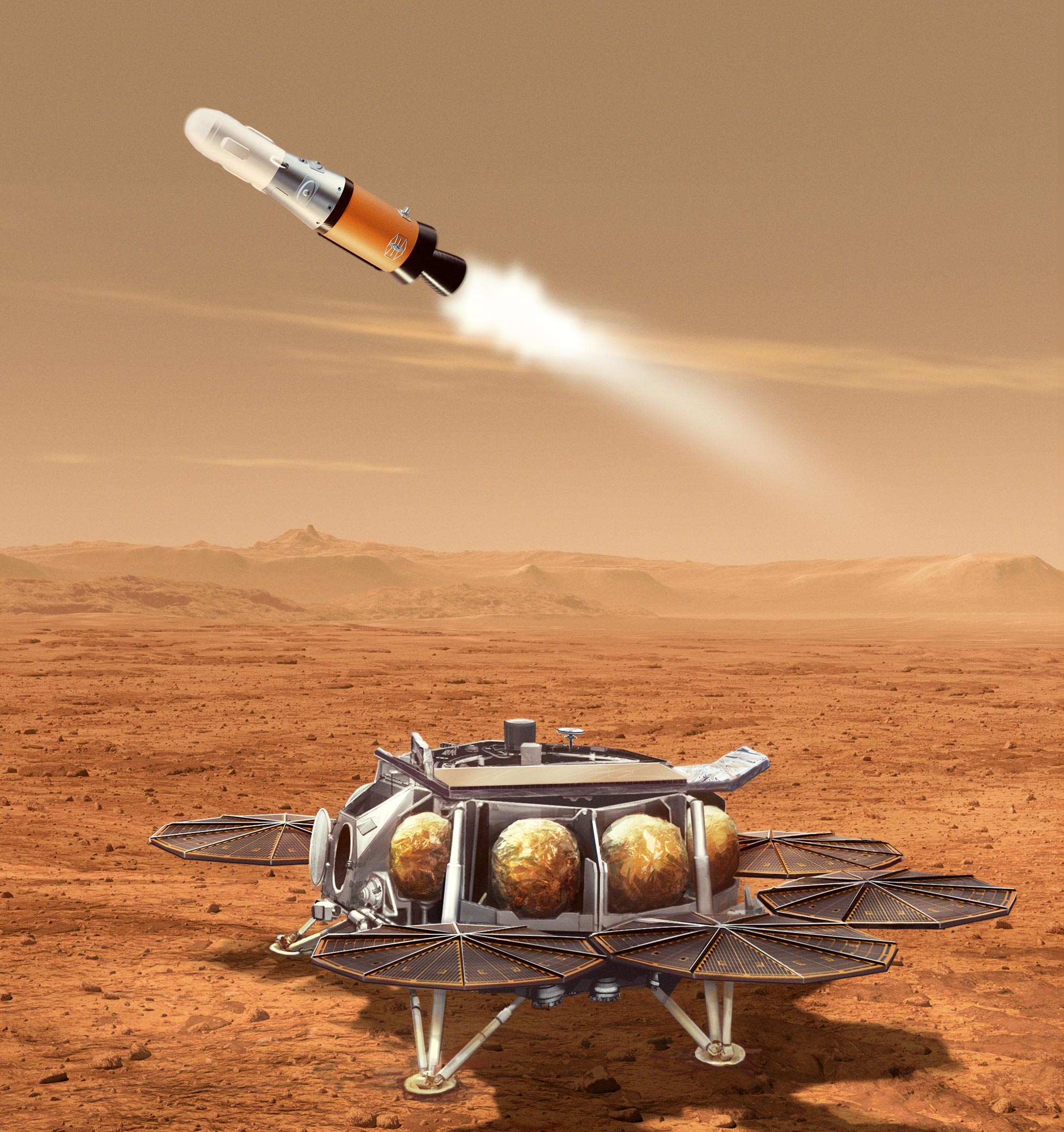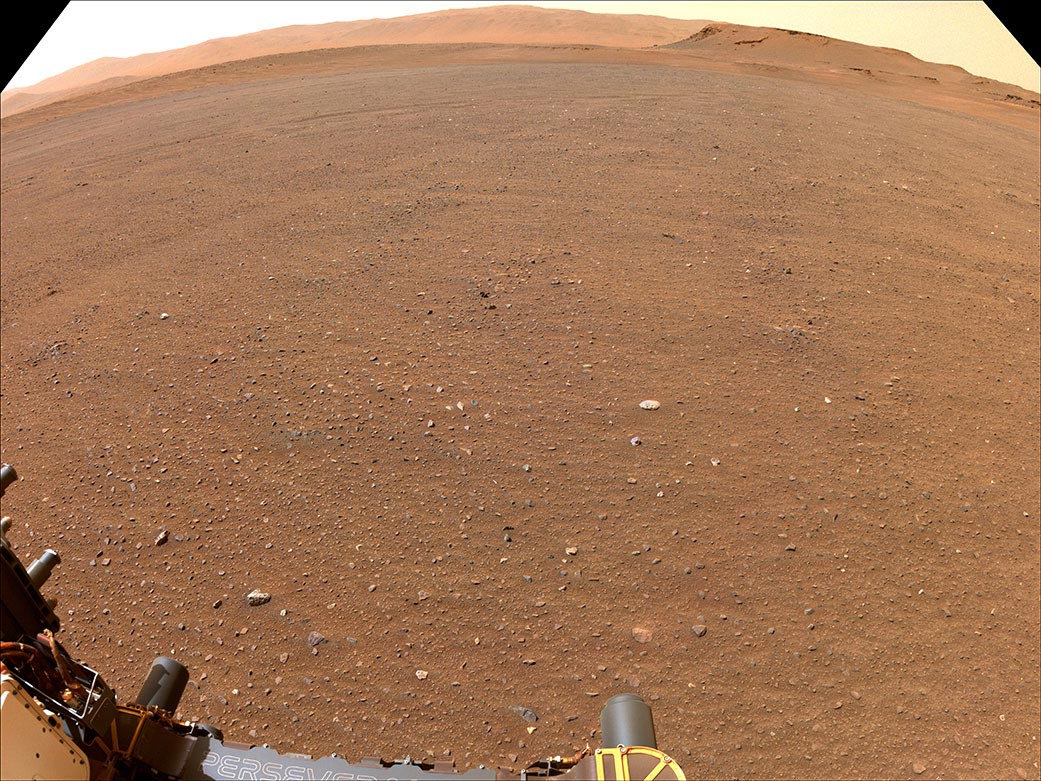
In this illustration of a Mars sample return mission concept, a lander carrying a fetch rover touches down on the surface of Mars. Credit: NASA/JPL-Caltech
The six-wheeled roving explorer has inspected a stretch of the Red Planet to see if it is flat enough for NASA’s next Mars lander.
While NASA’s Perseverance Mars rover is conducting its science campaign, taking samples at Jezero Crater’s ancient river delta, it’s also been busy scouting. The rover is searching for locations where the planned Mars Sample Return (MSR) Campaign can land spacecraft and collect sample tubes Perseverance has filled with rock and sediment. The sites being surveyed are under consideration because of their proximity to the delta and to one another, as well as for their reasonably flat, lander-friendly topography.
Mars Sample Return is a historic endeavor that would retrieve samples of that faraway terrain and deliver them to Earth for intensive analysis in laboratories to look for signs of past microscopic life on the Red Planet. To make this happen a strategic partnership between NASA and ESA (European Space Agency) would involve multiple spacecraft, including a rocket that would launch from the surface of Mars.

Because rocks and an undulating surface are harder to land on, engineers planning a Mars landing prefer to work with flatter ground. With that in mind, the MSR Entry, Descent, and Landing team is looking for a pancake-flat landing zone with a 200-foot (60-meter) radius.
“The Perseverance team pulled out all the stops for us, because Mars Sample Return has unique needs when it comes to where we operate,” said MSR Program Manager Richard Cook of NASA’s Jet Propulsion Laboratory in Southern California. “Essentially, a dull landing place is good. The flatter and more uninspiring the vista, the better we like it, because while there are a lot of things that need to be done when we arrive to pick up the samples, sightseeing is not one of them.”

Flat-Out Inspirational
The first stage of MSR is already in progress: Perseverance has cored, collected, and sealed nine samples of Mars rock to date. The ninth, collected on July 6, is the first from Jezero Crater’s ancient river delta. The plan is for Perseverance to drop, or cache, sample tubes on the surface to await later retrieval during MSR surface operations.

Choosing an area that lacks large rocks (especially those over 7 1/2 inches, or 19 centimeters, in diameter), sand dunes, and steeply angled terrain would go a long way toward easing the path for an MSR recovery vehicle to efficiently grab tubes before heading to the MSR Sample Retrieval Lander (see image above) and its Mars Ascent Vehicle (see image below).

Landing Strip
The MSR team calls the area they’ve been looking at the “landing strip” because – at least from images taken from spacecraft in orbit – it appears to be as flat and long as a runway. But they needed a rover’s-eye-view for a closer look.
“We had been eyeing these locations since before Perseverance’s landing, but imagery from orbit can only tell you so much,” said Al Chen, Mars Sample Return Systems Engineering & Integration manager at JPL. “Now we have some up-close-and-personal shots of the landing strip that indicate we were right on the money. The landing strip will more than likely make our shortlist of potential landing and caching sites for MSR.”

More about the campaign
NASA’s Mars Sample Return Campaign promises to revolutionize humanity’s understanding of Mars by bringing scientifically selected samples to Earth for study using the most sophisticated instruments around the world. The campaign would fulfill a solar system exploration goal, a high priority since the 1970s and in the last three National Academy of Sciences Planetary Decadal Surveys.
This strategic NASA and ESA partnership would be the first mission to return samples from another planet and the first launch from the surface of another planet. The samples collected by NASA’s Perseverance Mars rover during its exploration of an ancient lakebed are thought to present the best opportunity to reveal clues about the early evolution of Mars, including the potential for past life. By better understanding the history of Mars, we would improve our understanding of all rocky planets in the solar system, including Earth.





